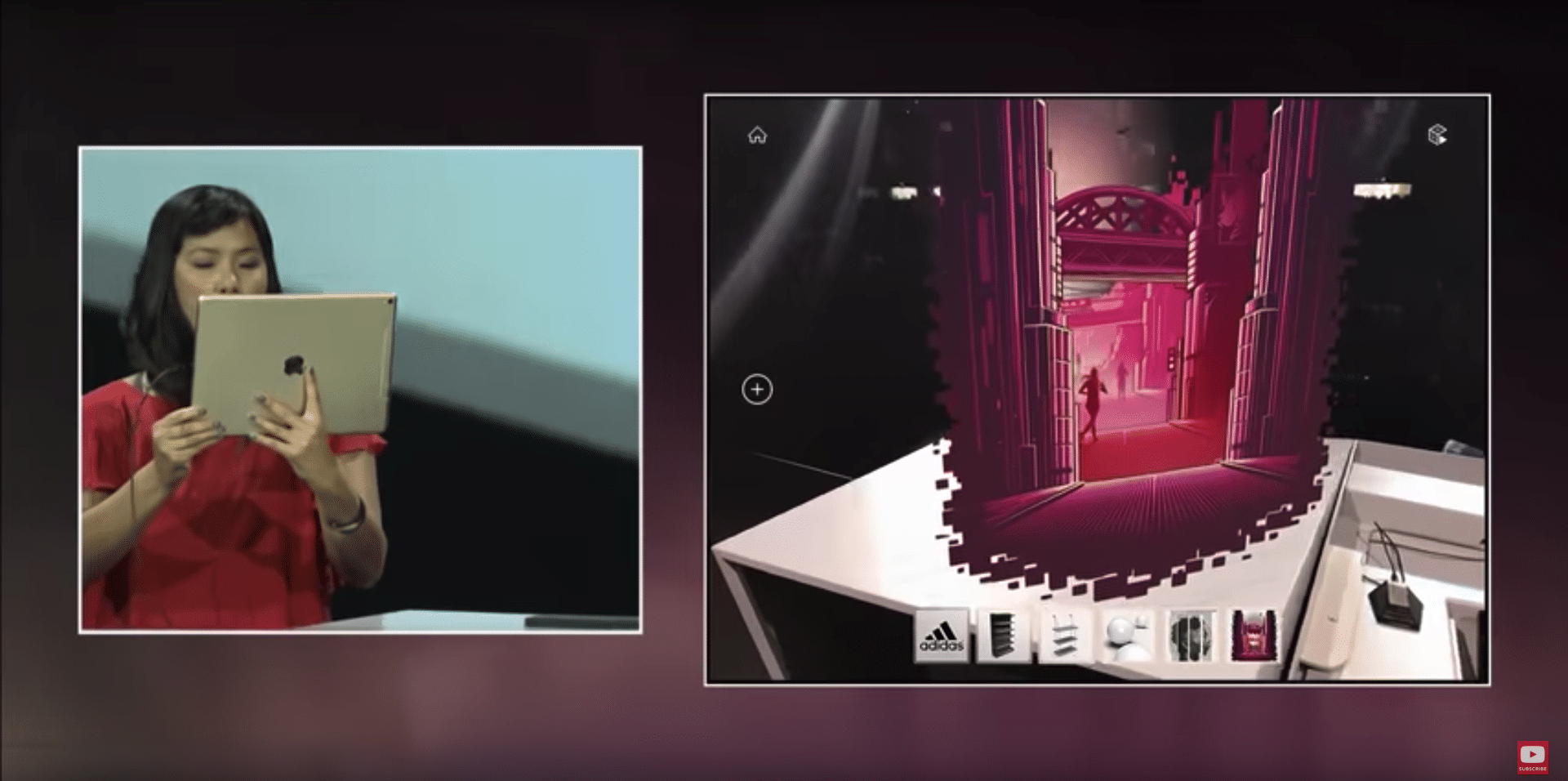
XR Talks is a weekly series that features the best presentations and educational videos from the XR universe. It includes embedded video, as well as narrative analysis and top takeaways. Speakers’ opinions are their own.
One of our biggest 2018 predictions that’s materializing is the emergence of tools and technologies that democratize AR creation. We’ve recently heard Unity and Super Ventures verbalize the importance of such tools to accelerate AR graphics and experience development.
Another company fittingly beating this drum is the original player to bring digital asset creation to the masses: Adobe. The Creative Cloud, including most notably Photoshop, has been democratizing advanced digital asset creation for years. Now it’s adding AR to the mix.
“Adobe has always embraced new mediums from print and PC to web and mobile,” said CTO Abhay Parasnis at the recent Adobe MAX show. “We’ve always looked around the corner to figure out the next creative medium. We truly believe that we’re at a similar inflection point with AR.”

Specifically, this vision materializes in the recently launched Project Aero. It’s a tool that integrates with Photoshop and other Creative Cloud programs to output 3D graphics that work in AR. It’s also working with Apple and others to standardize the USDZ file format for AR project workflows.
“Building these experiences will require complete rethinking: new tools, new workflows and new interaction models,” said Paransis. “All of you in the creative community have been hearing about the potential of these immersive platforms but the reality is, today most of it is out of your reach.”
This is where the integration with Creative Cloud comes in. One aspect of Project Aero is to make Creative Cloud workflows and outputs AR compatible. For example, graphical works in Photoshop can be made in 3D, then virtually placed in physical space for mobile AR interaction.
And this makes sense if you think about it. Tools like photoshop are inherently aligned with AR, because of the fundamental construct of layers. If you’ve ever worked in Photoshop, any given work is a series of layers that represent components of an image (think: shading or backgrounds).


In AR, those layers can come to life with dimension. And with that specific output in mind, creators can build things natively for AR, such as 3D sculptures or photographs that have deliberate viewpoints for a mobile AR experience from a localized and positionally-tracked device.
“This is a Photoshop file so that means layers,” said Adobe’s Zorana Gee while anchoring a Photoshop file right on the stage podium (see image above). “Notice now I’ve separated out and given a little depth to my layers… I can play around with parallax, I can look behind the walls.”
Lastly, in addition to democratizing AR creation, Adobe wants to do the same for distribution. Gee’s demo shows the ease of bringing a Photoshop file into physical space, but it’s also about industry partnerships. That includes the Apple, as mentioned, and a growing list of others.
“We will have a set of intelligent cloud based AR services,” said Parasnis from the Adobe Max stage. “Think of this as the secret sauce: these are real time content delivery services for an AR world where, with the push of a button, you can publish your content anywhere on the planet.”
See the keynote below, coded to start at the right point for the AR discussion. It also includes additional demos on designing then displaying products in AR, such as Adidas footwear.
For deeper XR data and intelligence, join ARtillry PRO and subscribe to the free ARtillry Weekly newsletter.
Header image credit: Adobe
